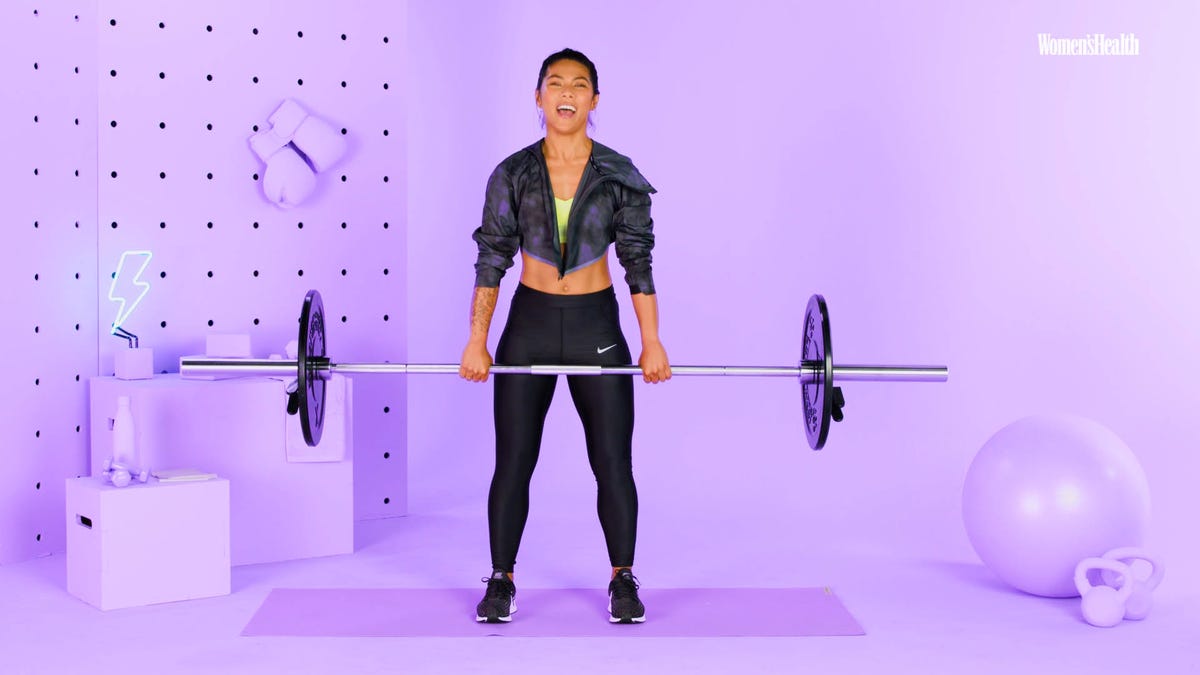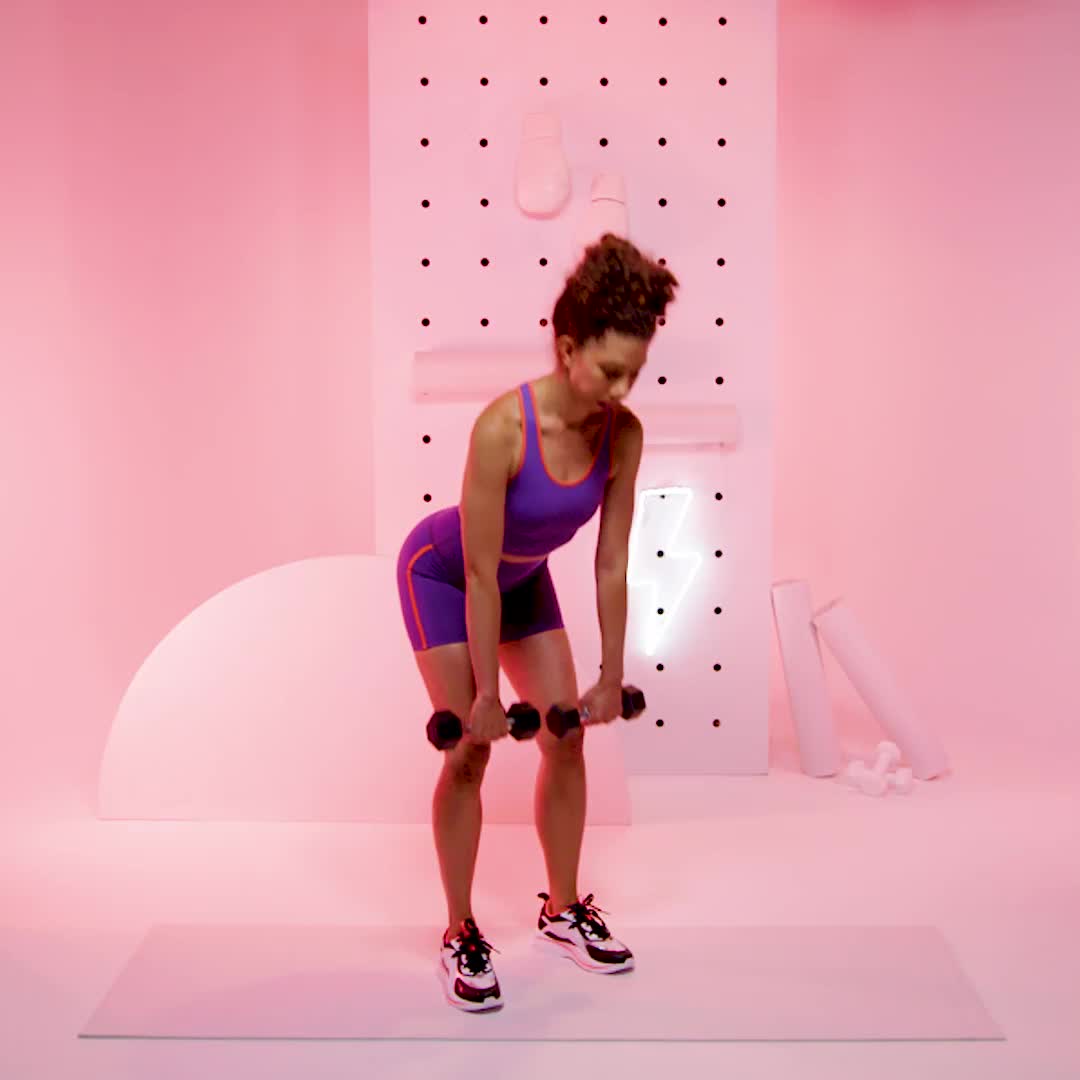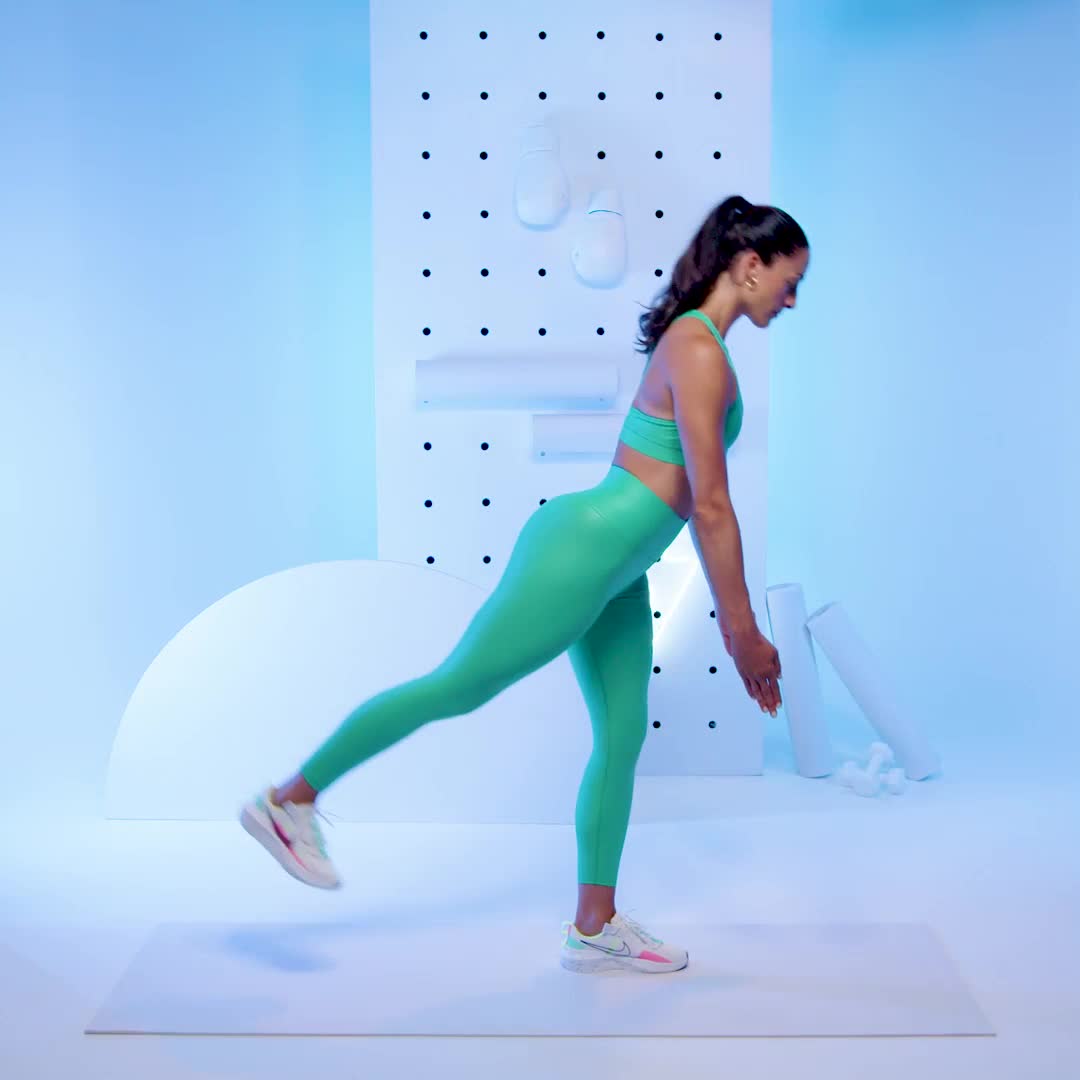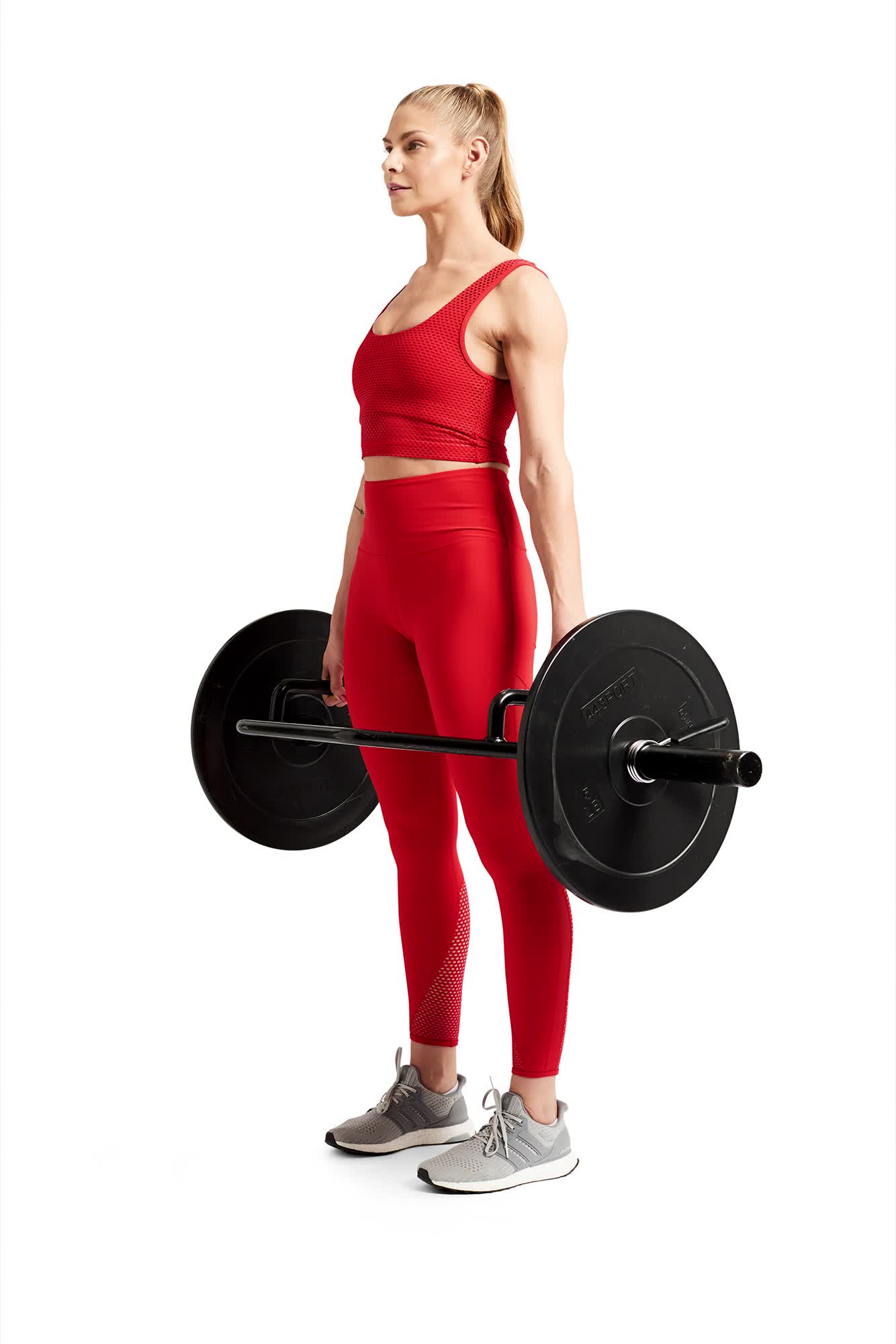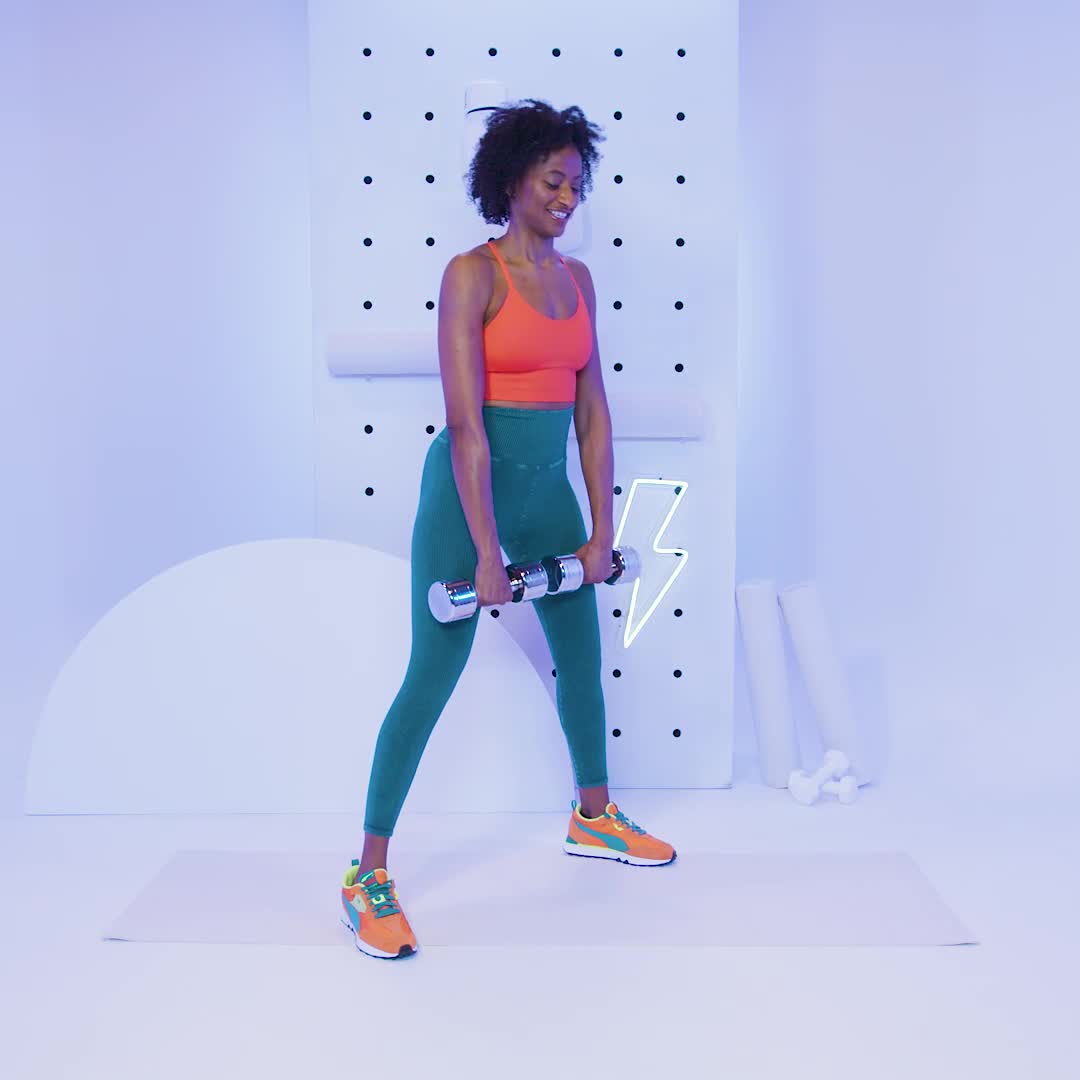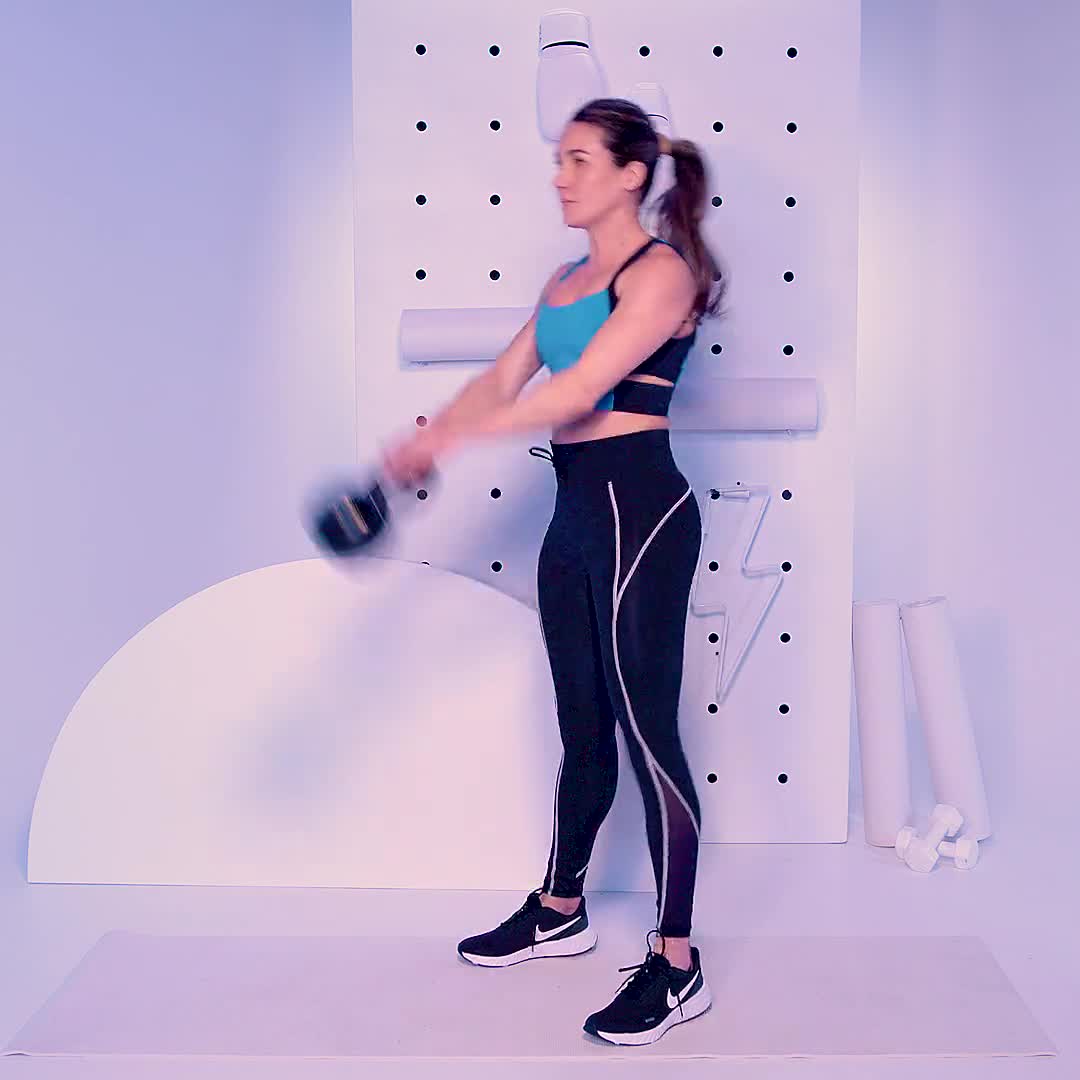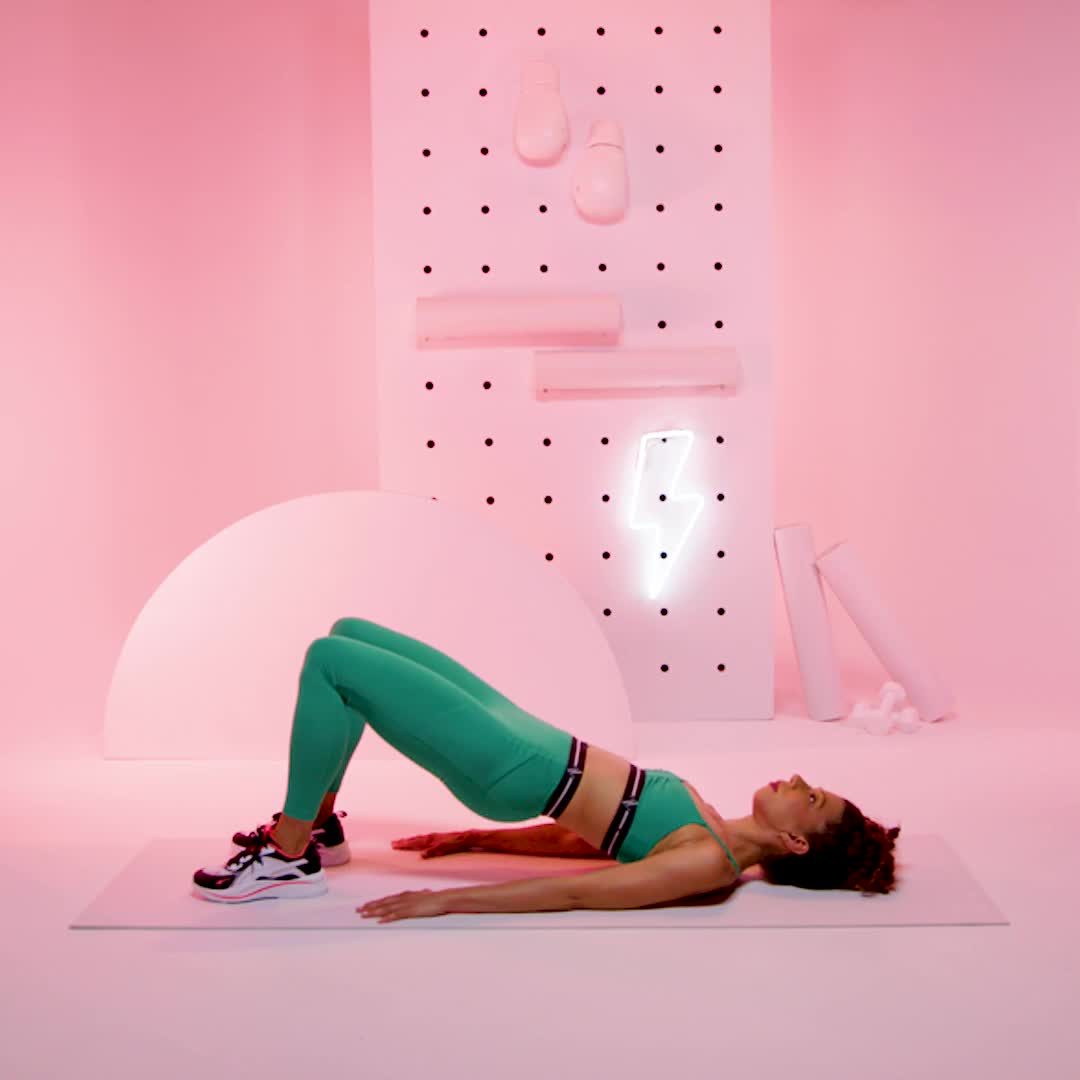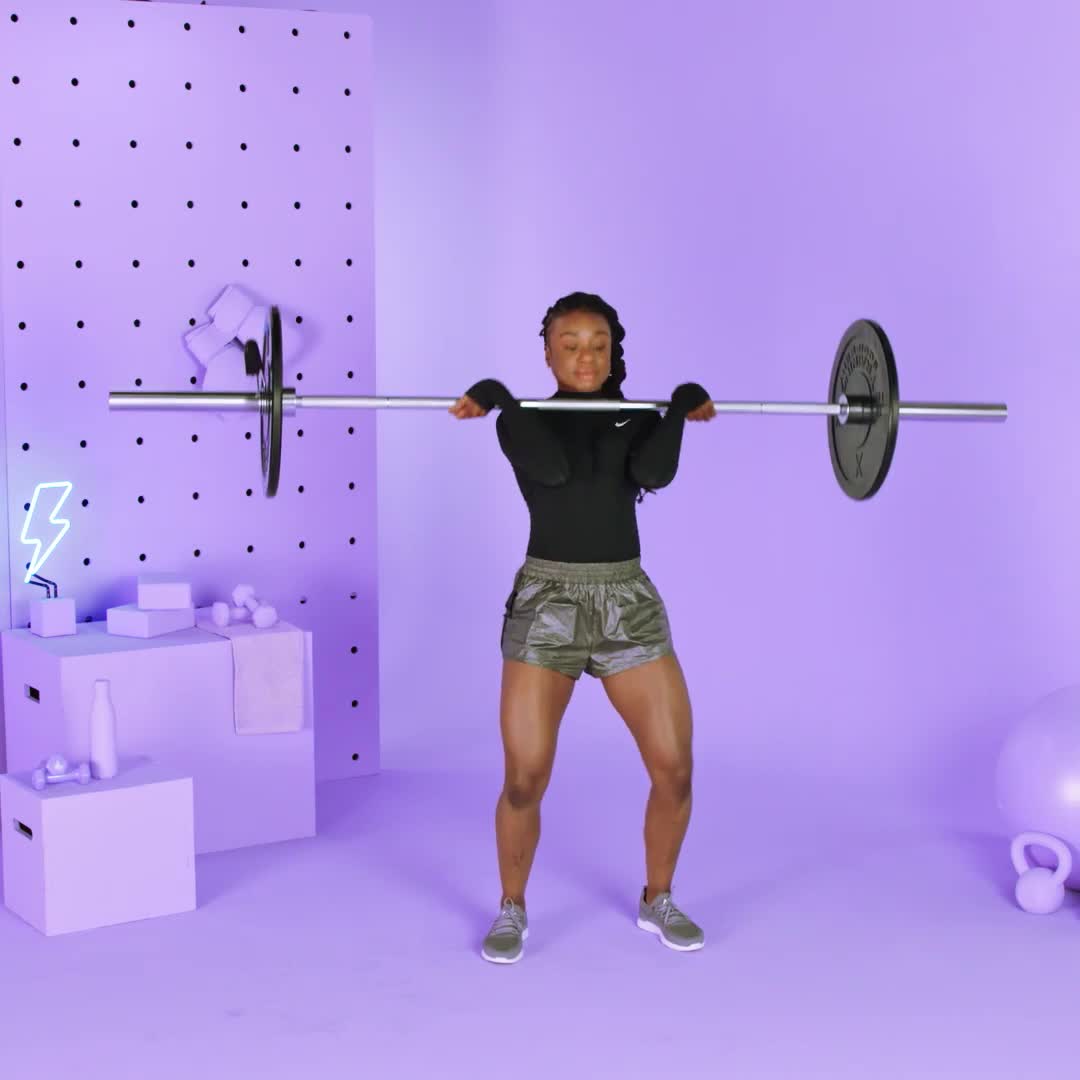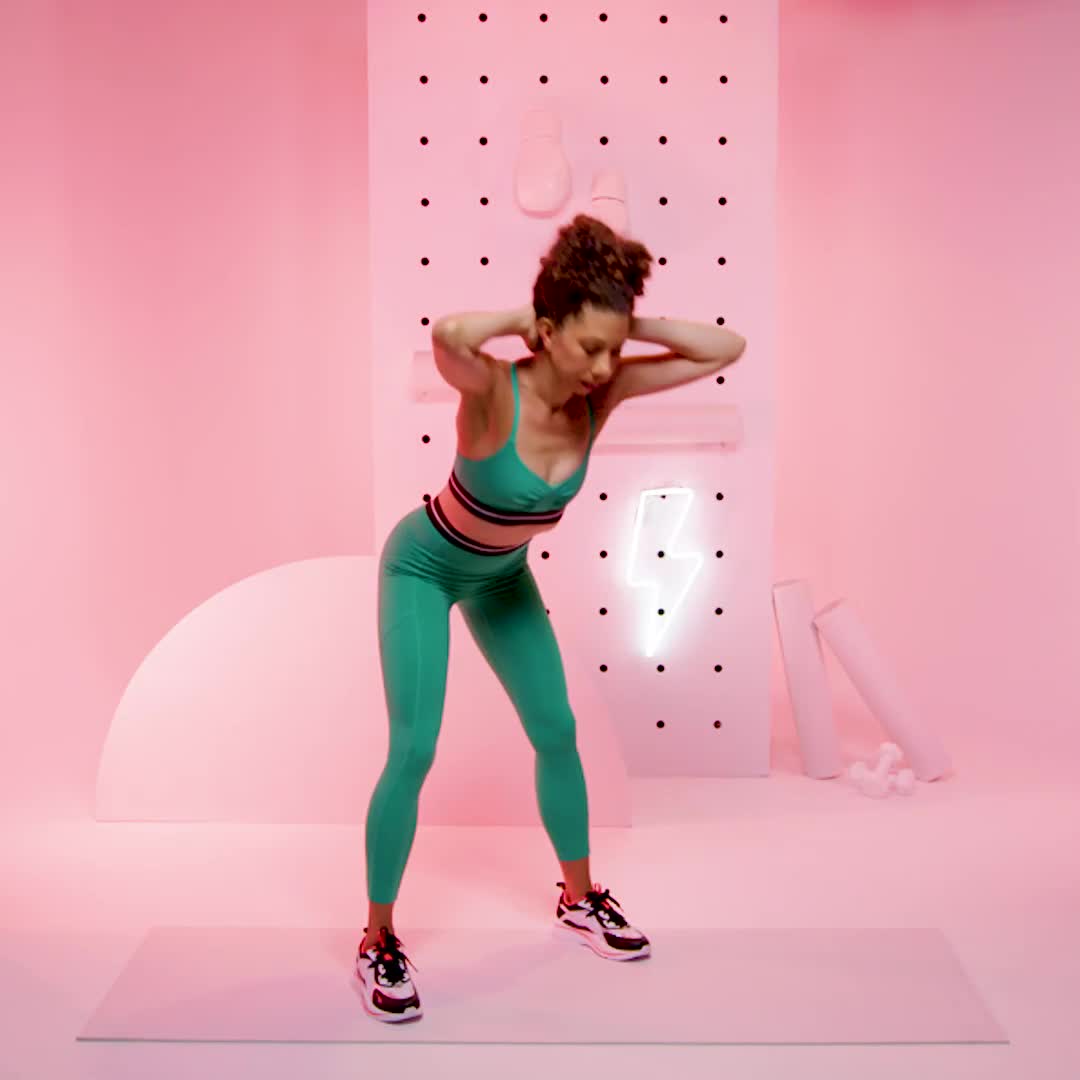In the realm of strength training, deadlifting is one of those key moves you certainly know of, but may be intimidated to try for fear of injury. Or, perhaps you don’t know exactly what muscles it’s supposed to work. However, there is a reason why deadlifts stand among the fundamental exercises you should be including in your gym routine.
At its core, the deadlift is a movement pattern that involves lifting weight from the ground to a standing position which engages a number of different muscles. Plus, it’s such a self-esteem boost. “Nothing will make you feel stronger than pulling something heavy off the ground,” says Samantha Hojnowski, CPT, a Connecticut-based personal trainer and powerlifting coach.
Whether you’re aiming to gain strength or build confidence, mastering the deadlift is a vital step in your fitness journey. Ahead, we dive into all the muscles the deadlift works, plus the best techniques and variations to try.
Meet the experts: Samantha Hojnowski, CPT, is a Connecticut-based personal trainer and powerlifting coach. Matt Berenc, CSCS, is a personal trainer, educator, and the head of coach development at FORME. Kate Georgiadis, CPT, is the founder of LIFT, a New York City-based fitness initiative focused on empowering women through individual and group training.
What muscles does the deadlift work?
Deadlifts are the ultimate full-body exercise because they truly work everything from your forearms to your glutes. The prime movers that really drive the exercise are the glutes and hamstrings, but deadlifts work more or less the entire backside of your body, says Matt Berenc, CSCS, a personal trainer, educator, and the head of coach development at FORME. Here are some of the muscles that deadlifts target:
● Glutes: The gluteal muscles are actually three muscles — the gluteus maximus, gluteus medius, and gluteus minimus, and they’re one of the two key drivers of the deadlifts, says Berenc. Having strong glutes is important for stability and posture.
● Hamstrings: Your hamstrings are a group of muscles that run up the back of the thigh. According to Berenc, they are the other key driver of the deadlift, and they work with the glutes and stretch out when you lower the weight and contract as you lift it up.
● Spinal erectors: The spinal erectors are a group of muscles in the back that allow you to straighten and rotate the spine. “Those are our prime stabilizers because they hold the trunk in place,” says Berenc, adding that they’re part of the core.
● Trapezius: The traps, which play an important role in maintaining posture, extend from your head, down your neck, across your shoulders, and down your back, creating a trapezoid shape, according to information from the NIH. And they are activated during a deadlift, says Kate Georgiadis, CPT, the founder of LIFT. “In a good deadlift, the lifter will first use the muscles of their upper back to get into a tight wedge position,” says Hojnowski.
● Forearms and grip: Holding the bar, or whatever type of weight you are using also improves your forearm and grip strength, according to Berenc.
Benefits Of Deadlift Training
Beyond improving the strength of individual muscles, working on a full-body movement like a deadlift is good for you in many ways. First it’s a huge time saver: “You’re getting more bang for your buck from one exercise versus targeting individual muscles in a variety of different exercises,” says Berenc.
Deadlifts also train your body to work as a whole. “We have the ability to isolate muscles and train muscles independently, but the reality is the body moves in unison,” says Berenc. “It doesn’t really identify a singular muscle on its own, it wants it to move as a system.” He gives the example of a choir: With one singer the music is nice, but as a whole it’s loud and beautiful. “That’s what something like the deadlift does for the body. It teaches you how to work together and how to synchronize all the muscles efficiently and at the right time when you develop full-body strength.”
The deadlift is also a perfect movement for training for everyday life. “Everyone needs to lift things in their daily life, so being able to do so safely is crucial for preventing injury,” says Hojnowski. “By practicing safely lifting in a controlled environment like the gym, you become less likely to injure yourself when lifting up a case of water or a bag of dog food.” She explains that building up resilience in your lower back makes it less likely for you to injure your back doing everyday activities outside of the gym.
Heavy resistance training is great for improving bone density, Hojnowski adds, which iis a concern as people, especially women, age. Lower bone density can lead to an increased risk of fracture, but doing weight bearing exercises, especially full-body ones like a deadlift, can help mitigate these risks. Deadlifts can also increase core stability, which helps improve balance and posture, according to Georgiadis.
How To Do A Proper Deadlift
Before deadlifting Berenc recommends testing your hip mobility by trying to touch your toes to ensure you have enough movement to hinge safely. If you can’t get close without pain or discomfort, you might need to work on your mobility before trying a deadlift or start your deadlift with the weight raised up (think: the weight plates on the barbell sitting on risers or a kettlebell resting on a box in front of you), instead of from the ground. “A deadlift is just as effective if you’re coming from an elevated position,” he says.
Next you need to pick what type of weight you will use. We typically think of barbells as the common choice for deadlifts, but Berenc says the key is choosing the right implement for your experience level, ability, and goals. Georgiadis recommends beginners start with dumbbells or kettlebells: “These options are easier to manage and allow for a free path to move the arms properly, which is crucial for learning the correct form.” Once you master the form, she suggests you transition to a barbell, as it allows you to progressively load more weight.
Pro tip: “Progression in weight is critical to ensure your muscles continue to be challenged and grow stronger in response to increased demand,” says Georgiadis, who usually recommends a 2 to 5 percent increase in weight on a weekly basis.
According to Hojnowski, the first rule for preventing injury in the deadlift is managing your load. “Keep the weight on the bar modest until you have mastered form and are truly ready to progress,” she says. She also suggests warming up by doing a few sets at a lighter weight before moving on to your working set, or the planned weight you want to lift. Check out more pro tips in the video below:
How to:
- Stand with your feet shoulder-distance apart, with a barbell positioned in front of you.
- Hinge at your hips and lower down, with a slight bend in your knees, until you’re far enough down to grab the bar (you can choose an overhand grip, underhand grip, or mixed grip). Keep your spine neutral by looking forward, not up.
- While grasping the bar, keep your shoulders back, then squeeze your glutes and your core as you stand up straight, tuck your pelvis, and lift the barbell.
- Pause for a moment at the top, then slowly lower back down to the ground. That’s 1 rep.
Deadlift Variations To Try
The conventional deadlift is a good way to get used to the movement and master proper form, but there are many variations of deadlifts that can help you hone in on different muscle groups or provide some variety to your routine. Here are some great ones to try out:
Romanian Deadlift
Why it rocks: This type of deadlift focuses on the eccentric, or lowering, part of the lift emphasizing hamstring and glute engagement, says Georgiadis.
How to:
- Stand with your feet shoulder-distance apart, with your weight implement in your hands.
- Send your butt back as you hinge at the hips to lower your trunk to a 45 degree angle (or as much as your mobility will allow) keeping the weight close to your shins.
- Pause at the bottom before returning to a standing position. That’s 1 rep.
Single-Leg Deadlift
Why it rocks: This type of unilateral training enhances your balance, improves muscle activation, and helps you identify strength imbalances, says Berenc.
How to:
- Start standing, optionally holding weights in each hand, with palms facing toward thighs.
- Shift weight onto one leg and keep it slightly bent while hinging forward at hips, extending the other leg straight behind you, until your torso is parallel to the floor.
- Lower the weights (or your hands) straight down as you move until they’re almost touching the floor.
- Return to standing. That’s 1 rep.
Hex Bar Deadlift
Why it rocks: By using a trap bar (a.k.a. hex bar), you can stay more upright and maintain a neutral spine, which Berenc says is a good choice if you have limited mobility.
How to:
1. Stand in the middle of the trap bar/hex bar with your feet shoulder-distance apart.
2. Hinge at your hips and lower down, with a slight bend in your knees, until you’re far enough down to grab the handles at your sides. Keep your spine neutral by looking forward, not up.
3. Keep your shoulders back, then squeeze your glutes and your core as you stand up straight, tuck your pelvis, and lift the weight. Stand tall to get a full lockout.
4. Pause for a moment at the top, then slowly lower back down to the ground. That’s 1 rep.
Sumo Deadlift
Why it rocks: When you move your legs wider than hip distance apart, you can target your quads.
How to:
- Holding two kettlebells or dumbbells, stand with feet slightly wider than hip-width apart, toes pointed out.
- Position weights in front of thighs, palms facing in.
- Keeping knees slightly bent, press hips back as you hinge at the waist and lower the weights toward the floor.
- Squeeze glutes to return to standing. That’s 1 rep.
Other Hinge Exercises
Aside from deadlifts, there are many other hinge-style exercises that target similar muscle groups. Some of these may be beneficial if you don’t yet have the mobility to do a deadlift, but want to work on that movement pattern. Others, like the power clean, may be even more advanced.
Kettlebell Swing
Why it rocks: Kettlebell swings not only target hinging muscles like your glutes and hamstrings, but can also raise your heart rate and get your blood pumping.
How to:
1. Stand with your feet hip-distance apart, holding the kettlebell with both hands.
2. Hinge your hips, pushing your butt back, and bend your knees, bringing the kettlebell between your legs.
3. Contract your glutes and push your hips forward. That’s 1 rep.
Pro tip: The kettlebell should naturally swing in between your legs, do not use your arm strength to move it.
Glute Bridge
Why it rocks: Like a deadlift, the glute bridge strengthens your posterior chain, the muscles on the back side of your body, but you don’t need as much mobility to effectively perform this exercise, per Berenc.
How to:
- Lie on back with feet flat against the floor and knees bent, arms at sides.
- Squeeze glutes and lift hips off the floor until your body forms a straight line from knees to shoulders.
- Pause at the top, then lower back down to starting position. That’s 1 rep.
Power Clean
Why it rocks: This movement is intense and works the whole body, a level up from the conventional deadlift.
How to:
1. Stand with your feet hip-width apart with the barbell against your shins.
2. Hinge forward with a neutral spine and grasp the bar with an overhand grip. Your hands should grip just outside the knees.
3. In one motion, lift the bar, pushing through the feet and pushing your hips forward. Keep the bar close to your body and pull in towards your chest.
4. Flip your wrists back and drop into a mini squat to catch the bar in front of the shoulders.
5. Flip your wrists down and lower the bar back to the floor. That’s 1 rep.
Good Morning
Why it rocks: Good mornings target every muscle along your back from your glutes to your spinal erectors to your core.
How to:
1. Stand with your feet shoulder-width apart with a dumbbell in each hand. Rest the dumbbells at the base of your neck.
2. With a slight bend in the knees, hinge forward at the hips, keeping your back flat. Lower your chest until it is parallel with the ground, or as far as you can comfortably go.
3. Brace your core and return to standing. That’s 1 rep.
Read the full article here



